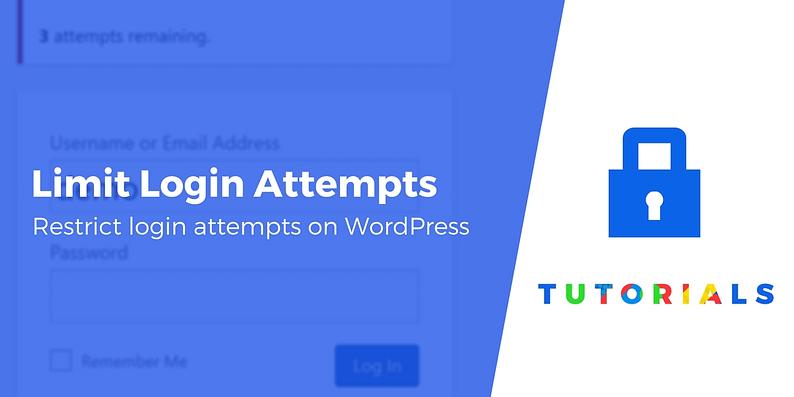Are you tired of constantly worrying about the security of your WordPress site? If so, you’re not alone! With the rise of cyber threats, ensuring that your website is protected from unauthorized access is more critically important than ever.One of the simplest yet most effective strategies to enhance your site’s security is limiting login attempts. By doing so, you can considerably reduce the risk of brute force attacks and keep your valuable content safe. In this article, we’ll walk you through the easy and free steps to limit login attempts on your WordPress site. Whether you’re a seasoned developer or a complete beginner, you’ll find that securing your website can be quick and hassle-free. Let’s dive in and give your WordPress security the boost it desperately needs!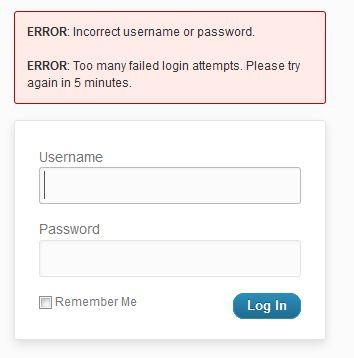
Understanding the Importance of Limiting Login Attempts in WordPress
When it comes to securing your WordPress site, one of the simplest yet most effective strategies is to limit login attempts. This practice can significantly reduce the risk of unauthorized access and brute force attacks on your site. By restricting the number of times a user can enter incorrect login credentials, you create an additional layer of protection that can deter potential hackers.
Brute force attacks are one of the most common threats to WordPress sites. hackers use automated scripts to try countless username and password combinations until they gain access. By implementing a limit on login attempts, you not only slow down these attacks but also make it more difficult for intruders to succeed. Here’s why you should consider this essential security measure:
- Enhanced Security: Limiting login attempts drastically reduces the chance of a successful brute force attack.
- Peace of Mind: Knowing that your site is better protected allows you to focus on creating content rather than worrying about security breaches.
- User Accountability: If a user exceeds the allowed login attempts, they will be temporarily locked out, prompting them to pay closer attention to their login credentials.
- Easy Implementation: There are various plugins available that make it incredibly simple to set up and customize login attempt limits without needing to write a single line of code.
Here’s a quick overview of how limiting login attempts works:
| Login Attempt | Action Taken | Duration of Lockout |
|---|---|---|
| 1-3 Attempts | allowed | N/A |
| 4-6 Attempts | Temporary Lockout | 5 Minutes |
| 7+ Attempts | Extended Lockout | 30 Minutes |
By setting these limits, you’re not only protecting your site but also encouraging users to be more mindful of their passwords. Educating your users on the importance of strong passwords and the consequences of failed login attempts can further enhance your site’s security. Using unique, complex passwords and changing them regularly can make a significant difference in your overall security posture.
Ultimately, limiting login attempts is a straightforward yet powerful strategy to protect your WordPress site from potential threats. It’s an investment in your site’s security that pays off by keeping your content safe and your users secure. taking this proactive step can make all the difference in the competitive online landscape.
The Risks of Unrestricted Login Attempts and How They Affect Your Site
When it comes to managing your WordPress site, securing user accounts should be at the top of your priority list. Unrestricted login attempts can open the door to a plethora of security issues, primarily due to the increased risk of brute force attacks. These attacks occur when an unauthorized user attempts to guess passwords through automated scripts, tirelessly trying various combinations until they gain access. Without limits in place, your site becomes a target, inviting hackers to exploit its vulnerabilities.
A few potential consequences of allowing unlimited login attempts include:
- Account Takeover: Onc a hacker successfully logs in,they can gain complete control over the affected account,potentially leading to data theft or malicious activities.
- Server Overload: Continuous automated login attempts can overload your server, resulting in slower site performance or even downtime.
- Damage to Reputation: If users notice unusual activity or face difficulties logging in due to attacks, it can erode trust in your brand and deter future visitors.
Furthermore, the implications go beyond just individual accounts. If a hacker gains access to an admin account, they can manipulate site settings, install harmful plugins, or compromise user data. This kind of breach can lead to significant recovery costs and, in severe cases, permanent damage to your site’s reputation.
Another issue that arises from unrestricted login attempts is the potential for IP blacklisting. When multiple attempts from the same IP address are detected, security plugins can automatically blacklist them. This not only affects the malicious user but can inadvertently block genuine users who may have a similar IP range.Therefore, implementing a limit is critical to maintaining a balance between security and user experience.
To illustrate the importance of limiting login attempts,consider the following table that showcases the comparison between unrestricted access and a limited system:
| Feature | Unrestricted Login Attempts | limited Login Attempts |
|---|---|---|
| Risk of Brute Force Attacks | High | Low |
| Site Performance | Potential Overloads | Stable |
| Data Security | vulnerable | protected |
| User Trust | Decreased | Increased |
not limiting login attempts is a gamble no site owner should take. By proactively implementing measures to restrict login attempts, you safeguard your WordPress site against a multitude of risks, preserving both your data integrity and your users’ trust. Remember, it’s always better to prevent attacks than to deal with the consequences after the fact.
Choosing the Right Plugin for Limiting Login Attempts Made Easy
When it comes to securing your WordPress site, limiting login attempts is a simple yet effective measure. the right plugin can make this process seamless and stress-free. Here are some critical factors to consider when choosing a plugin for this purpose:
- User Reviews: Always check the plugin’s ratings and reviews. A well-rated plugin is frequently enough more reliable and showcases a proven track record in the community.
- Ease of Use: Look for a plugin with a straightforward interface. You don’t want to spend hours figuring out how to configure it. The best plugins offer clear settings,so you can adjust them with ease.
- Customization Options: Ensure the plugin allows you to customize settings such as the number of attempts allowed, lockout duration, and notifications. Flexibility is key to making the plugin work for your specific needs.
- Updates and Support: A plugin that receives regular updates is crucial for maintaining security. Additionally, reliable support can be invaluable if you encounter any issues.
To help you further, here’s a quick comparison of some popular plugins for limiting login attempts:
| Plugin Name | Features | Rating |
|---|---|---|
| Limit Login Attempts Reloaded | Customizable lockout settings, email notifications | 4.8/5 |
| WP Limit Login attempts | Simple interface, basic settings | 4.5/5 |
| Login LockDown | IP tracking, login attempt logging | 4.6/5 |
Another aspect to consider is compatibility with other security plugins you might be using. Ensure that the plugin you choose integrates well with your existing tools without causing conflicts. This synergy can enhance your overall security strategy.
Lastly, do not underestimate the importance of testing the plugin after installation. Make sure to simulate a few failed login attempts and check if the lockout mechanisms are functioning as expected. This step is vital to confirm that your site is adequately protected against brute force attacks.
Step-by-Step Guide to Installing and Configuring Your Chosen Plugin
To start with, go to your WordPress dashboard and navigate to the Plugins section.Click on Add New to search for the plugin that will help you limit login attempts. In the search bar, type “Limit Login Attempts Reloaded” or the name of your chosen plugin. Once you find it, click on the Install Now button.
After the installation is complete, you will see the option to Activate the plugin. Click on this button to enable it on your site. You should now see a new menu option in the dashboard sidebar that corresponds to the plugin.
Next, click on the newly created menu item to access the plugin’s settings. Here, you’ll be greeted by various options to customize how the plugin works. Typically, you will find settings like:
- Maximum Login Attempts: Set the maximum number of failed login attempts allowed before locking the user out.
- Lockout Duration: Specify how long a user will be locked out after exceeding the login attempts.
- Notification Settings: Choose whether to receive alerts when someone is locked out.
Once you have customized these settings to your preference, don’t forget to click on the Save Changes button at the bottom of the page.This ensures that your settings are applied and your site is better protected from brute force attacks.
For additional security, consider enabling features such as IP Whitelisting or Logging where available. You may want to review the logs regularly to keep track of any suspicious activities. If your plugin includes a statistics section, check it out to see how frequently enough lockouts are occurring and adjust your settings accordingly.
it’s an excellent idea to test the plugin’s functionality. Try logging in with incorrect credentials to see if the lockout mechanism kicks in as expected. This will help you ensure that your configurations are working properly and your site is secure.
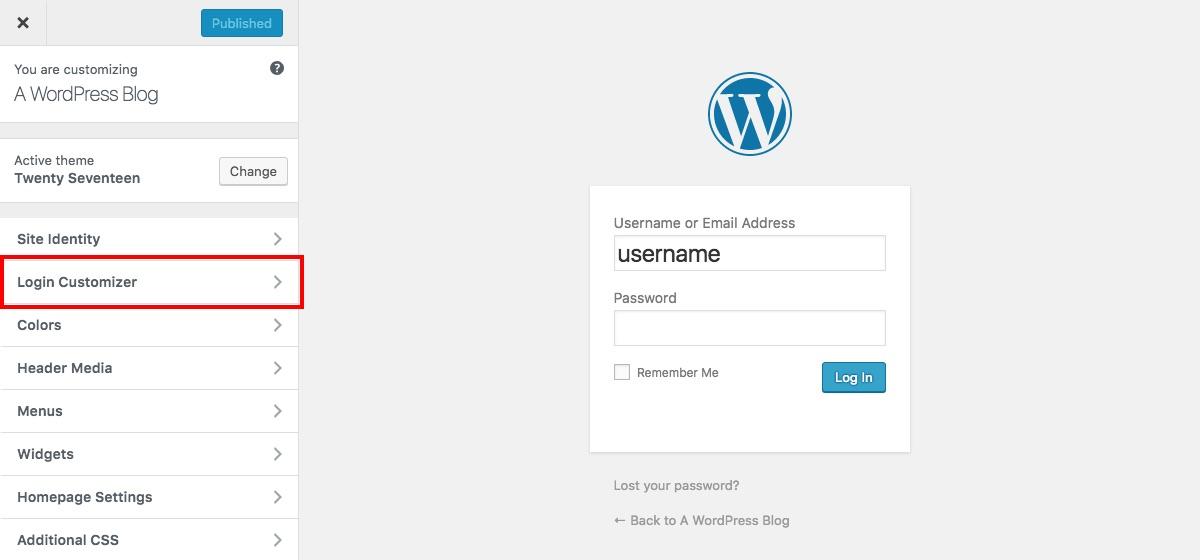
customizing Your Login Attempt Settings for Maximum Security
When it comes to protecting your WordPress site, customizing your login attempt settings is a crucial step in fortifying your defenses against unauthorized access. By limiting the number of login attempts, you can significantly reduce the risk of brute-force attacks that aim to exploit weak passwords.Here’s how to tailor your settings for maximum security.
First, consider implementing a login limit plugin. there are several excellent options available that can help you manage failed login attempts effortlessly. Utilizing such a plugin allows you to:
- Set a maximum number of login attempts before the user is temporarily locked out.
- Define the duration of the lockout period, providing a balance between security and user accessibility.
- Receive notifications when multiple failed attempts are detected,enabling you to monitor suspicious activity.
Additionally, you might want to adjust the timeout settings for users. Shorter timeout durations can enhance security by requiring users to re-enter their credentials more frequently, especially if they are inactive. This precaution is particularly useful in high-risk environments where sensitive data is accessed.
For an even more robust defense, consider combining your login attempt limits with two-factor authentication (2FA).This adds an extra layer of security by requiring users to verify their identity through a secondary method,such as a text message or authentication app. By enforcing 2FA alongside login limits, you can protect your site from various types of attacks.
| Setting | Recommended value |
|---|---|
| Maximum Login Attempts | 3-5 attempts |
| Lockout Duration | 15-30 minutes |
| Notification Threshold | 3 failed attempts |
| Timeout for inactive Sessions | 5-10 minutes |
don’t forget to keep your plugins and themes updated. vulnerabilities in outdated software can expose your site to attacks,rendering all your customization efforts ineffective. Regular updates ensure that you have the latest security features and patches applied, enhancing your overall protection.
By taking the time to customize your login attempt settings, you not only safeguard your website but also reassure your users that their data is secure. Implement these strategies, and watch your security posture strengthen, making your site a less appealing target for attackers.
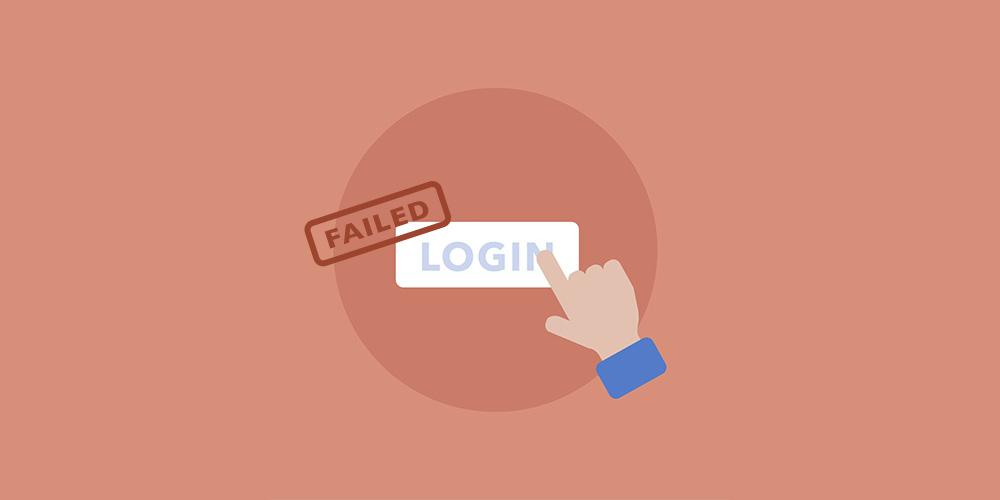
Monitoring Failed Login Attempts: Why It Matters and How to Do It
Monitoring failed login attempts is crucial for maintaining the security of your WordPress site. Cybercriminals often exploit weak login credentials as a first step towards gaining unauthorized access. By keeping an eye on these failed attempts, you can identify potential threats and take proactive measures to protect your site.
Here are some reasons why tracking failed login attempts is essential:
- Identify Attack Patterns: Recognizing repeated failed login attempts can definitely help you discern if your site is under attack. This could indicate a brute force attack, where hackers systematically try diffrent usernames and passwords.
- Strengthen Security measures: By knowing how often failed logins occur, you can adjust your security settings, such as implementing stronger password policies or enabling two-factor authentication.
- Enhance User Awareness: Notifying users of failed login attempts can prompt them to change weak passwords or review their account security settings.
So, how can you effectively monitor these attempts? Here are a few methods:
- Use Security Plugins: Many WordPress security plugins come with built-in features that track login attempts. Plugins like Wordfence or iThemes Security provide detailed logs and can send alerts for suspicious activity.
- Enable Login Lockout: By limiting the number of login attempts, you can automatically lock out users after a certain number of failed tries, significantly reducing the risk of unauthorized access.
- Review Your Logs: Regularly checking your site’s login logs can help you catch unusual activities early. Look for patterns in failed logins, such as the same IP addresses attempting to log in.
To make it easier to understand the impact of monitoring failed login attempts, consider this table that summarizes the benefits of various monitoring strategies:
| Monitoring Strategy | Benefits |
|---|---|
| Security Plugins | Comprehensive tracking and alerts |
| Login Lockout | Prevents brute force attacks |
| Log Reviews | Identifies suspicious activities early |
By implementing these strategies, you can significantly enhance your WordPress site’s security. Monitoring failed login attempts not only protects your data but also instills confidence in your users,showing them that their security is a priority. In an era where cyber threats are ever-present, taking these steps is not just advisable—it’s essential.
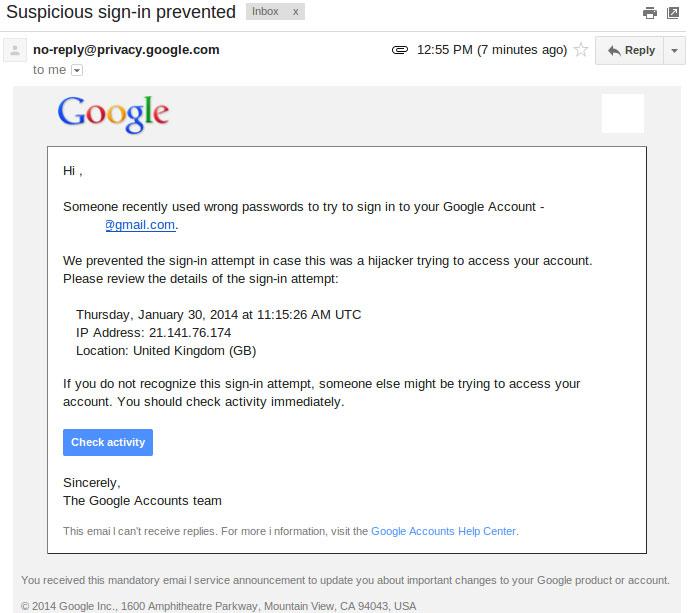
Setting Up Email Alerts for Suspicious Login Activity
Monitoring your WordPress site for suspicious login activity is a crucial step in maintaining security. Setting up email alerts ensures you’re informed promptly if there’s any unauthorized access attempt. Here’s how to easily set this up:
First,you need to install a reliable security plugin. Here are a few popular options:
- Wordfence – Offers extensive security features, including login attempt monitoring.
- iThemes Security – Allows you to set up alerts for failed login attempts and other suspicious activities.
- Sucuri Security – Provides real-time notifications about security issues,including login alerts.
Once you’ve installed a security plugin, navigate to its settings. Look for an option related to login security or notifications. Here’s a general guidance on what to do:
| Action | Details |
|---|---|
| Enable Email Alerts | Turn on notifications for suspicious login attempts. |
| Set Thresholds | Define how many failed attempts trigger an alert. |
| Choose Recipients | Select who should receive these alerts (admin, security team). |
After configuring the settings, ensure to test the alerts. You can do this by attempting a failed login with a test account to confirm you receive the notification. If you don’t see the alert, revisit the settings to troubleshoot the issue.
Additionally, consider integrating two-factor authentication (2FA) alongside your email alerts. This adds an extra layer of security, requiring users to verify their identity through a secondary method, like a mobile app or SMS.Most security plugins offer 2FA options, making it easy to enhance your site’s protection.
regularly review your alert settings and adjust as needed. Staying proactive with your site’s security can save you from potential headaches down the line. By monitoring login attempts and staying informed, you’re taking significant steps to safeguard your wordpress site.
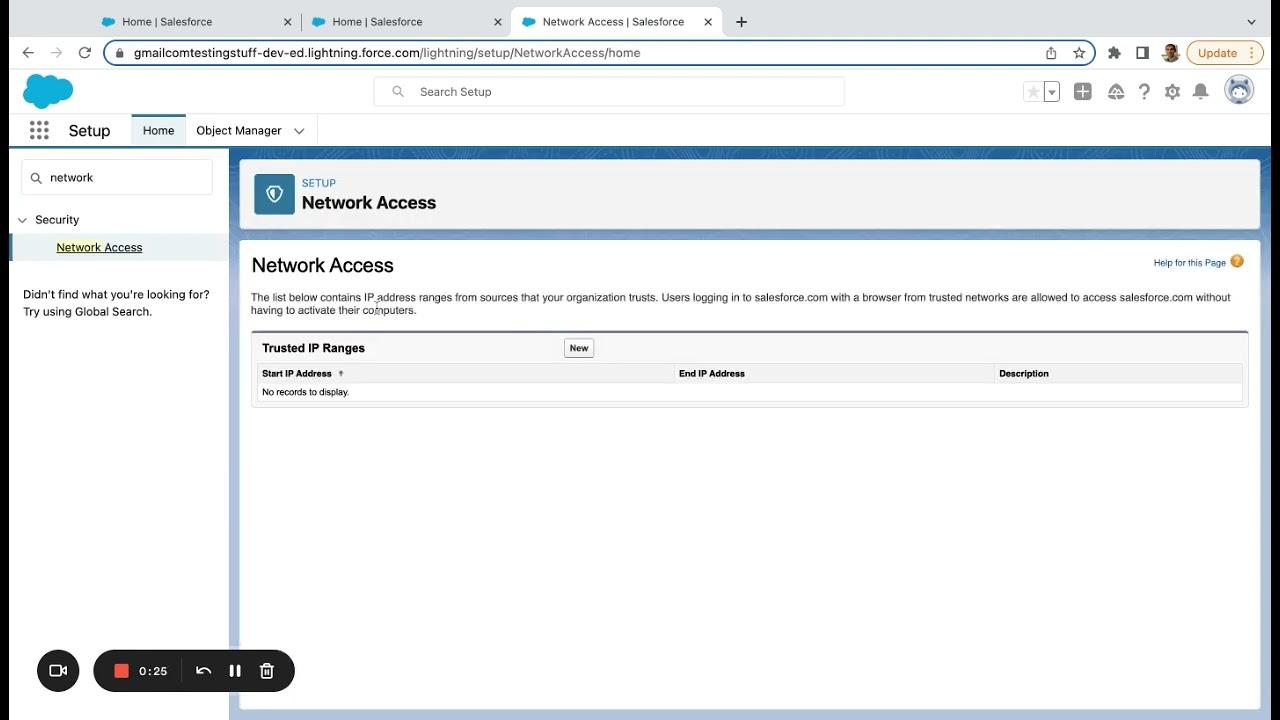
How to Whitelist Trusted IP Addresses for Seamless Access
To ensure that your website remains accessible to your trusted users while still protecting it from potential threats, it’s important to implement a whitelist for specific IP addresses. This process allows you to grant seamless access to individuals who require it, all while maintaining robust security measures.
Here are a few steps to help you whitelist trusted IP addresses effectively:
- Identify Trusted IP Addresses: Start by gathering the IP addresses of users who need consistent access. This might include your team members, web developers, or even frequent customers.
- Access Your Security Plugin: Many security plugins for WordPress, such as Wordfence or iThemes Security, provide an option to manage whitelisted IPs. Navigate to the settings page of your chosen plugin.
- Add IP Addresses: Look for an option labeled ‘Whitelist IPs’ or ‘trusted IPs.’ Enter the identified addresses, ensuring that there are no typos, as this could lead to unauthorized access.
- Save Changes: After adding the required IP addresses, make sure to save your changes. This ensures that the adjustments take effect immediately.
It’s also beneficial to create a record of these trusted IPs. This can be done in a simple table format:
| IP Address | Owner | Purpose |
|---|---|---|
| 192.168.1.1 | John Doe | Web Developer |
| 203.0.113.5 | Jane Smith | Content Manager |
| 198.51.100.10 | Client A | Frequent Access |
Remember to regularly review and update your whitelist. This is especially important if team members change or if you notice any suspicious activity from previously trusted addresses. Keeping your whitelist current not only enhances security but also ensures that your trusted users face minimal disruptions when accessing your site.
whitelisting is a straightforward yet effective way to balance security with accessibility. by following these steps, you can enhance your website’s defenses while ensuring that your trusted users can continue to work efficiently without unneeded barriers. Prioritize both safety and ease of access, and enjoy the peace of mind that comes with a well-managed security strategy.
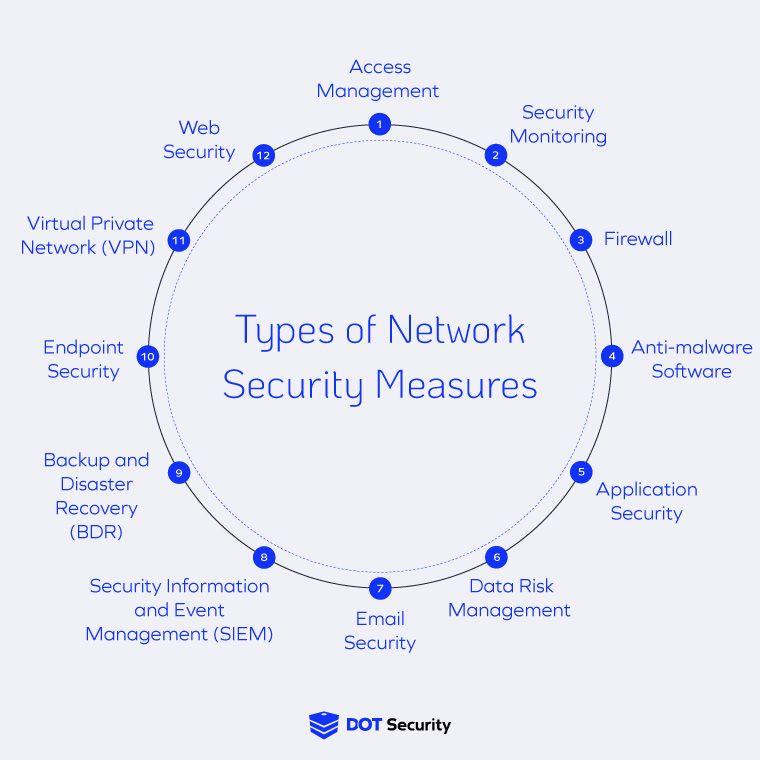
Testing Your New Security Measures: Ensuring Everything Works Perfectly
Once you’ve implemented your new login limit measures, it’s time to put them to the test. This phase is crucial to ensure that all security mechanisms are functioning as expected and that your WordPress site remains protected against unauthorized access attempts. Here’s how you can effectively test your new settings:
Start by attempting to log in with incorrect credentials. This will help you confirm that the limit on login attempts is correctly enforced. Make sure to:
- Use a mix of wrong usernames and passwords.
- Observe the behavior after each failed attempt.
- Note whether a notification appears once the maximum number of attempts is reached.
Next, check how the site responds after reaching the limit. ideally, it should either temporarily lock out the user or display a amiable message informing them of the block. To ensure everything is working seamlessly, consider the following:
- Test the lockout duration, if applicable—does it automatically reset after a certain time?
- Verify that legitimate users are still able to reset their passwords or regain access.
- Look for any error messages or notifications that may not be user-friendly.
Don’t forget to evaluate the effectiveness of your additional security plugins or features. If you’ve integrated a CAPTCHA or two-factor authentication, run through those processes as well. It’s important to ensure that:
- All security layers work in harmony.
- Users can easily navigate the login process without unnecessary hurdles.
In the event somthing doesn’t work as was to be expected, take detailed notes. Documenting these issues can definitely help you troubleshoot effectively. If necessary,reach out to the plugin developer or consult online forums for support. Here’s a simple troubleshooting table to guide your process:
| Issue | Possible Solution |
|---|---|
| Login attempts not limiting | Check plugin settings or conflicts with other security plugins. |
| Lockout message unclear | Customize notification settings in your security plugin. |
| CAPTCHA not appearing | Verify CAPTCHA integration and reconfigure if necessary. |
once you’ve ironed out any issues, it’s a great idea to conduct regular security audits. Setting a reminder to review your login limits and overall security measures can definitely help keep your WordPress site safe from evolving threats. Remember, a proactive approach to security is always more effective than a reactive one!
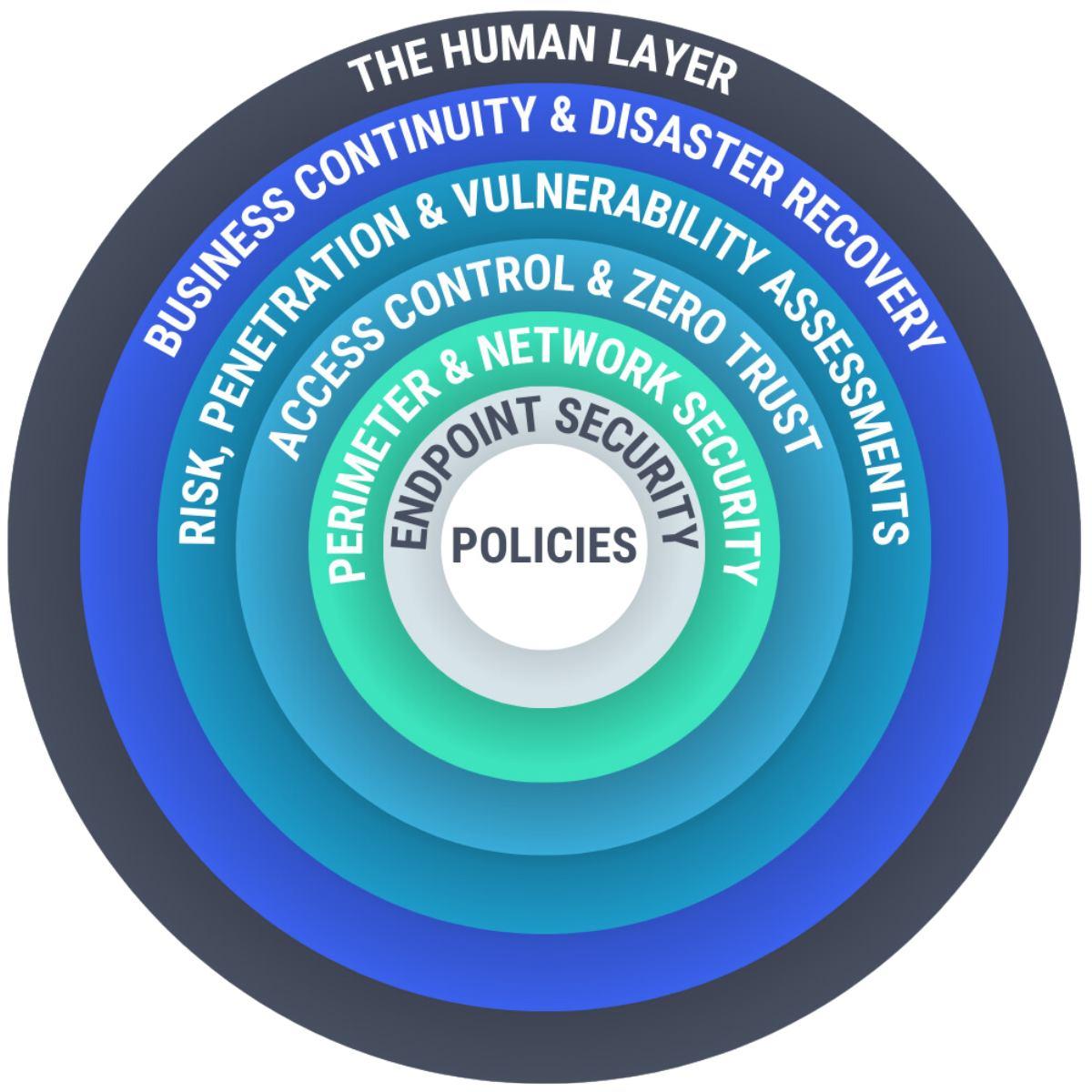
Exploring Additional Security Layers to Complement Login Limits
Once you’ve established a robust limit on login attempts, it’s essential to further enhance your website’s security. Implementing additional layers will help protect against more sophisticated attack vectors and ensure your site remains a fortress for your data. Here are several effective strategies you can consider:
- Two-Factor Authentication (2FA): Adding 2FA provides an extra layer of security by requiring users to verify their identity through a second method,such as a text message or an authentication app. This makes it significantly harder for unauthorized users to gain access, even if they manage to guess a password.
- IP Whitelisting: If your team accesses the site from specific locations, consider whitelisting those IP addresses. This means only users connecting from those addresses can attempt to log in,drastically reducing the chance of brute force attacks.
- Security Questions: Implementing security questions during login can add another hurdle for potential intruders. Choose questions that are not easily guessable but that your users can remember.
- Limit Admin Access: Restrict access to the WordPress admin area by only allowing certain roles to log in. This ensures that even if someone can bypass the login limits, they won’t have access to critical areas of your site.
Additionally, employing some of these techniques can provide a more comprehensive security approach:
| Security Layer | description |
|---|---|
| Regular Updates | Keeping your WordPress core, themes, and plugins updated minimizes vulnerabilities. |
| Firewall Protection | Utilizing a web application firewall can help block malicious traffic before it reaches your site. |
| Security Plugins | Plugins like Wordfence or Sucuri offer multiple features for hardening your WordPress site. |
| Regular Backups | Ensure your site’s data is regularly backed up, allowing for quick recovery in case of an attack. |
Combining these strategies with your login limit can create a strong security posture for your WordPress site. Remember, each layer of security you add acts as another barrier, making it increasingly difficult for potential attackers to succeed. By investing time and resources into safeguarding your site today,you safeguard your hard work and valuable data for the future.
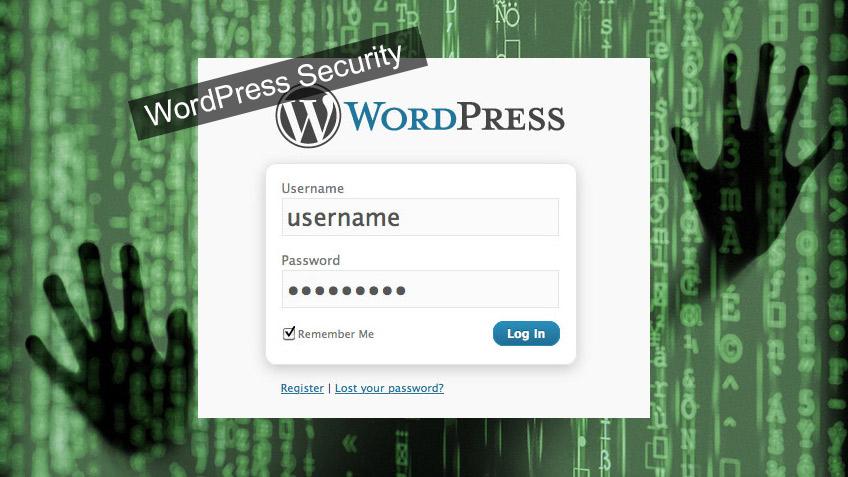
Common Issues When Implementing Login Limits and How to Solve Them
When implementing login limits in WordPress, several common issues can arise that may hinder the effectiveness of your security measures. Understanding these pitfalls and their solutions can make a significant difference in safeguarding your site.
1. User Lockouts: One of the most frequent problems is inadvertently locking out legitimate users. This is especially problematic for sites with multiple contributors or users who forget their credentials. To address this, ensure you have a recovery process in place. Consider adding a support contact or a password reset feature that is both user-friendly and effective.
2. Excessive False Positives: Tight login attempt limits may result in false positives, where genuine users are blocked due to unusual behavior, like typing errors. To minimize this, implement a logging system that distinguishes between suspected attacks and normal login failures. You can adjust the sensitivity of your login attempt settings based on the behavior patterns of your users.
3. Conflicts with Other Plugins: Some security or performance plugins might conflict with your login limit settings, leading to unexpected behavior. to mitigate this issue, always test new plugins in a staging habitat before deploying them live. Additionally, keep your plugins updated and periodically review their compatibility with your login limit features.
4. Reduced User Experience: While security is critical, excessive restrictions can frustrate your users. It’s essential to find a balance. Consider implementing features like progressive delays after multiple failed attempts rather than outright blocks. This approach allows genuine users to regain access while still deterring potential attackers.
5. monitoring and Reporting: After implementing login limits, it’s vital to monitor their effectiveness. If you’re not tracking login attempts or lockouts, you may miss critical insights into user behavior and potential threats. Utilize monitoring tools or plugins that provide detailed reports on login attempts, enabling you to refine your strategies over time.
| Common Issues | Solutions |
|---|---|
| User Lockouts | Implement a recovery process and contact support |
| Excessive False Positives | Adjust sensitivity and log user behavior |
| Plugin Conflicts | Test plugins in staging and update regularly |
| Reduced User Experience | Use progressive delays instead of blocks |
| Lack of Monitoring | Utilize monitoring tools for detailed reports |
By proactively addressing these common issues, you can create a secure environment that protects your site without alienating your users. Taking the time to refine your approach will lead to a more robust login security system, ultimately benefiting both you and your site’s community.

Final Thoughts on Keeping Your WordPress Site Safe and Secure
As you wrap up your journey to tighten the security of your WordPress site, remember that protecting your online presence is an ongoing commitment. Limit login attempts is just one of several essential practices that can guard against unauthorized access and brute force attacks. By implementing these measures, you’re not only securing your website but also safeguarding your valuable content and user data.
To ensure your WordPress site remains a fortress, consider these additional security practices:
- Regular Updates: Keep your WordPress core, themes, and plugins updated.This helps patch vulnerabilities that could be exploited by malicious actors.
- Strong Passwords: Encourage users to create complex passwords. Implementing a password policy can significantly enhance your site’s security.
- Two-Factor Authentication: Adding an extra layer of security through 2FA can deter intruders even if they manage to acquire your password.
- Backup Solutions: Regularly back up your site to ensure you can restore it quickly in case of a breach or data loss.
Moreover,hosting providers frequently enough offer additional security tools that can be beneficial. Integrating these into your security strategy will build a robust defense system against potential threats. Here’s a simple overview of some common security features provided by hosting companies:
| Security Feature | Description |
|---|---|
| SSL Certificates | Encrypts data exchanged between users and your site,enhancing privacy. |
| Firewall Protection | Blocks malicious traffic and prevents unauthorized access attempts. |
| Malware Scanning | Regularly checks your site for vulnerabilities and infected files. |
| Security Audits | Periodic assessments help identify and mitigate potential risks. |
In addition to these tools and practices, fostering a security-aware culture among users is crucial. Educate your team about recognizing phishing attempts and the importance of security best practices. When everyone is on the same page, your site’s defenses will strengthen significantly.
remember that no security measure is foolproof. Continually monitor your site for any suspicious activity and adjust your security protocols as new threats emerge. By staying proactive and vigilant, you can maintain a safe and secure WordPress environment for yourself and your visitors.
Frequently Asked Questions (FAQ)
Q&A: Limit Login Attempts in WordPress: How to Do It (Easy & Free)
Q1: Why should I limit login attempts on my WordPress site?
A: Great question! Limiting login attempts is like adding an extra lock to your front door. It helps protect your site from brute force attacks, where hackers try different username and password combinations to gain access. By restricting the number of login attempts, you significantly reduce the chances of unauthorized access and keep your site secure.
Q2: Is it difficult to set up login attempt limits?
A: Not at all! Setting up login attempt limits in WordPress is super easy and can be done in just a few clicks. You don’t need to be a tech genius or have coding skills.There are plenty of free plugins available that handle this for you, making it a hassle-free process.
Q3: Can you recommend some plugins for limiting login attempts?
A: Absolutely! Two popular options are “Limit Login Attempts Reloaded” and “WP Limit Login Attempts.” Both are user-friendly and effective. They allow you to customize settings, such as how many attempts are allowed and how long a user is locked out after reaching the limit. Plus, they’re completely free!
Q4: What happens if someone exceeds the login attempt limit?
A: If a user exceeds the number of allowed login attempts, they will be temporarily locked out for a specified period. During this time, they won’t be able to try logging in again, which discourages attackers.You can customize this lockout duration based on your preferences.
Q5: Will limiting login attempts affect my legitimate users?
A: Not if you set it up correctly! Legitimate users might occasionally forget their passwords or mistype them, but you can adjust the number of allowed attempts to ensure they have a fair chance. Plus,most plugins also allow for whitelisting certain IP addresses,so trusted users won’t have to deal with lockouts.
Q6: What else can I do to enhance security on my WordPress site?
A: Great thinking! Along with limiting login attempts, consider implementing two-factor authentication, using strong passwords, and keeping your themes and plugins updated. Regular backups are also crucial – just in case something goes wrong. Combining these measures can create a robust defense for your site.
Q7: Where can I find detailed instructions to set this up?
A: You’re in luck! Check out our comprehensive guide that walks you through installing and configuring a login limit plugin step-by-step. It’s straightforward and will have you securing your site in no time. The peace of mind that comes with better security is absolutely worth it!
Q8: What are you waiting for? Should I start limiting my login attempts now?
A: Yes, yes, yes! The sooner you take action, the better protected your site will be. Security should always be a priority, especially in today’s digital landscape. So go ahead, check out that guide, and start limiting those login attempts today for a safer WordPress experience!
In Retrospect
And there you have it! By limiting login attempts in WordPress, you’re taking a crucial step toward enhancing your website’s security. It’s a simple, yet highly effective measure that pays off in spades by protecting your valuable content and user data from unauthorized access.
Remember,a small tweak can lead to significant improvements in your site’s safety. With just a few clicks, you can implement these changes and be confident that your site is better protected against brute force attacks. Plus, the peace of mind that comes with knowing you’re doing everything you can to secure your online presence is priceless.
So, don’t wait any longer! Dive into your WordPress dashboard, follow the steps we discussed, and lock down your login process today. Your website deserves it, and so do your visitors.If you have any questions or need further assistance, feel free to reach out in the comments below. Happy blogging, and stay secure!

